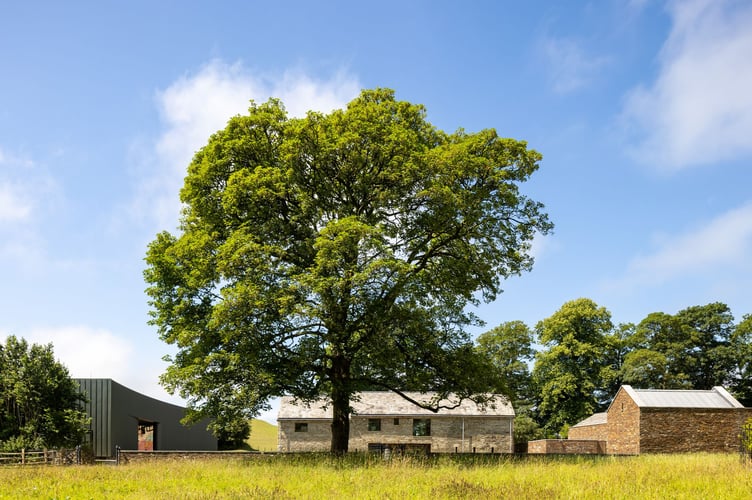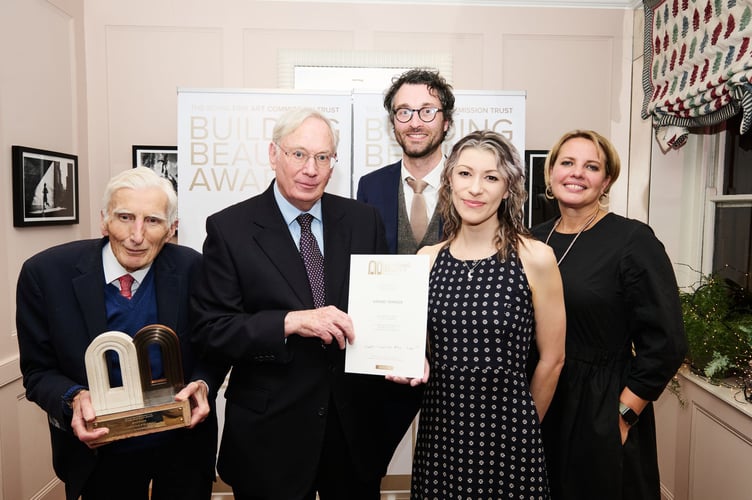A CORNISH exhibition dedicated to one of the county’s most remarkable historic figures has been crowned the Grand Winner of the 2025 Building Beauty Awards, marking a major national triumph for the village of St Ive.
The project not only secured the Grand Winner title but also won the coveted Little Gem Award, beating renowned architectural schemes from across Britain.
The awards, which celebrate the new buildings and public spaces judged to have added genuine beauty to the nation, were presented by Lord Rees of Ludlow OM at a ceremony attended by His Royal Highness The Duke of Gloucester, Patron of the Royal Fine Art Commission Trust.

Winners received a bespoke trophy designed by master jeweller Theo Fennell.
Designed by Stonewood Design for The Emily Estate/The Newt in Somerset, the Story of Emily was praised by judges as “a collection of gems” seamlessly integrated into its evocative Cornish landscape. The project was privately funded by South African investor Koos Bekker, who has restored and transformed the estate surrounding the Victorian rectory where Emily Hobhouse spent her childhood.
Emily Hobhouse, best known for exposing the horrific conditions inside British concentration camps during the Boer War, is regarded as one of Cornwall’s most courageous humanitarian figures. The new museum documents her life, activism and enduring legacy.
Judges – Stephen Bayley, Paul Finch OBE, David Jenkins, Emma Duncan and Mike Stiff – highlighted how the complex brings together historic and contemporary design with rare harmony: the restored rectory, furnished meticulously in High Victorian style, now sits alongside a zinc-clad exhibition hall and a series of Cornish-slate outbuildings.
“Everything bears scrutiny,” the judging panel wrote, praising the craftsmanship, restraint and attention to detail. “Every penny has been well-spent, delivering exquisitely crafted buildings that avoid the trap of showiness.”

The panel noted that the exhibition hall – almost austere with its windowless walls and a dramatic single zinc “slice” opening – is balanced by more daring features elsewhere.
One such flourish has already made global headlines: the museum restaurant’s 65-foot by 10-foot structural glass wall, the largest single pane of glass ever installed anywhere in the world.
Crafted in Germany and transported with extraordinary logistical effort, the vast pane gives visitors an uninterrupted view of the reimagined walled garden, blurring the boundary between building and landscape.
Yet the judges stressed the project’s beauty lies not only in headline-grabbing elements but also in its meticulous finishing touches – from scalloped oak joinery in the shop to South African yellowwood in the restaurant, from lovingly built greenhouses to carefully curated pathways and signage. Even the smallest details, they said, “easily avoid mediocrity.”
The 2025 Building Beauty Awards also recognised York Minster’s Centre of Excellence for Heritage Craft Skills, London’s V&A East Storehouse, and Rafter Walk in Canada Dock.





Comments
This article has no comments yet. Be the first to leave a comment.